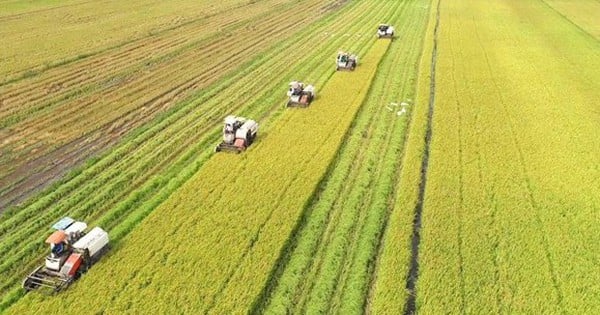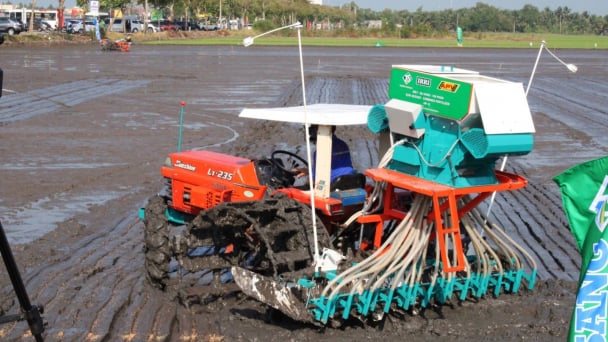May 21, 2025 | 05:59 GMT +7
May 21, 2025 | 05:59 GMT +7
Hotline: 0913.378.918
May 21, 2025 | 05:59 GMT +7
Hotline: 0913.378.918
The Editorial Board's Words: Dragon fruit is a major export product with a strong competitive capability that delivers significant revenues for producers. However, owing to the Covid-19 pandemic's effects over the last year, dragon fruit goods have faced several challenges and shortcomings, particularly an uncertain export market that is hurting farmers. The need to reshape the direction of dragon fruit plants is critical.
According to the Crop Production Department of MARD, Vietnam has over 65,000 hectares of dragon fruit, with a total annual yield of nearly 1.4 million tons. Binh Thuan, Long An, and Tien Giang are three key dragon fruit production hubs, encompassing 55,000 hectares, accounting for 85 percent of the whole area and generating roughly 1.2 million tons.

Dragon fruit is a "billion-dollar" export fruit of Vietnam, but there are many difficulties arising. Photo: KS.
Mr. Le Thanh Tung, deputy director of the Crop Production Department, said that although the export value of Vietnamese dragon fruit was only USD 438 million in 2015, the figure doubled to USD 1.1 billion by 2020. The positive outcome encouraged the rapid expansion of the dragon fruit area, which aided in increasing production for exports.
Binh Thuan province has designated the dragon fruit plant as an advantage and local specialty due to its favorable climate and soil characteristics. According to Mai Kieu, director of the Provincial Department of Agriculture and Rural Development, there are currently more than 30,000 farming households involved in the production, purchasing, preliminary processing, and export of dragon fruits, which creates regular jobs for 70,000-80,000 laborers each year. It may be said that the export value of Binh Thuan dragon fruit accounts for a significant percentage of the fruit production value structure.
By the end of 2021, the province's dragon fruit area had grown to 33,750 hectares, with a total production of 700,000 tons. There are 12,397 hectares of dragon fruit certified under VietGAP (representing 35% of the total area) and almost 355 hectares of dragon fruit certified via GlobalGAP.

With high profits, the dragon fruit area in the southern provinces of our country has rapidly expanded in recent years. Photo: VAN.
Along with pineapple, durian, and jackfruit, dragon fruit is one of the most productive plants in Tien Giang province. The dragon fruit is regarded as an easy-to-grow, broadly adaptable plant; it even grows well in the coastal region of Kieng Phuoc, where rice plant cultivation remains difficult.
According to Mr. Nguyen Van Man, head of the Tien Giang Department of Agriculture and Rural Development, dragon fruit trees have been rated as poverty alleviation plants in numerous districts. It is 6 times more effective than rice in suitable circumstances, with an average profit of VND 200-300 million per hectare each year.
During 2025-2025, Tien Giang province developed a project on dragon fruit plants to cultivate the plant on 7,000 ha of land. However, the area has been expanded to roughly 10,000 ha, with an annual yield of around 260,000 tons. The red-flesh dragon fruit accounts for 70% of total production, the white-flesh dragon fruit accounts for the remainder.
Mr. Nguyen Chi Thien, Deputy Director of the Department of Agriculture and Rural Development in Long An province, stated that the province has now developed an area of nearly 12,000 hectares of dragon fruit (primarily red flesh dragon fruit), with approximately 25,000 households engaged in production; total output is approximately 325,000 tons per year. In such a case, the main season output of dragon fruit is around 140,000 tons, while the off-season production exceeds 180,000 tons.

Not only the southern provinces, dragon fruit trees are also increasingly expanding in the northern provinces. Photo: Le Ben.
Since 2017, dragon fruit was purchased from VND 30,000 to 60,000 per kg, allowing many farmers to make a good living. However, the price of dragon fruit plummeted to VND 30,000 VND from 2017 to 2019, and the price has only fluctuated between VND 2,000 and 20,000 per kilogram since this Lunar New Year.
Binh Thuan dragon fruit is mostly serving domestic consumption and exports. The local market consumes just around 15% of the production; the remaining 85% is exported. Approximately 2-3% is exchanged via official channels, while the remainder is sold through border gates into Chinese markets or affiliated with firms outside the province for direct export.
Mr. Nguyen Tanh, an experienced dragon fruit grower in Ham Liem commune, Ham Thuan Bac district, Binh Thuan province, stated that when dragon fruit has yet to develop strongly, white-flesh dragon fruit is traded at around VND 12,000-15,000 per kg, or even VND 25,000-30,000, farmers can gain proper profit and make a fortune on some hectares of dragon fruit.
Farmers, on the other hand, anticipate off-season produce. Mr. Tanh said that since 2020, numerous orchards in Binh Thuan have only sold the fruit for less than VND 10,000 per kg, a significant decrease from prior years. However, given the past 2021 dragon fruit production, farmers can only sell for a few hundred dongs to VND 1,000-3,000 per kg, and they are unable to find buyers.

Farmers are sad because of a bad dragon fruit crop. Photo: KS.
Mr. Tanh had 1,500 dragon fruit pillars, which produced 4 tons of fruits in the first batch. He sold for VND 1,500 per kg and earned VND 6 million in revenue. The second batch was 3 tons, which were sold for VND 2,000 per kilogram, resulting in a loss of VND 40 million. As a consequence, he chose to leave the 700 remaining pillars.
Similarly, Mr. Tieu Dinh Huong's family had 650 pillars of white-fleshed dragon fruit, but the previous harvest failed, resulting in a VND 20 million loss. According to Mr. Huong, the majority of Binh Thuan dragon fruit producers in this harvest failed utterly, and many homes were insecure as a result of unsuccessful dragon fruit production

The price of dragon fruit is too cheap, so many gardeners in Binh Thuan have to leave the dragon fruit pillars uncared. Photo: LK.
Dragon fruit producers in Binh Thuan, Long An, and Tien Giang are also disappointed since the price of dragon fruit in the off-season is low, often just a few thousand dongs per kilogram, and no one buys it.
Mr. Nguyen Chi Thien, Deputy Director of Long An Department of Agriculture and Rural Development, said at a recent MARD conference on dragon fruit production and consumption in Binh Thuan that the province had 144 warehouses, including 93 cold storage, with a total capacity of 5,500 tons. In the face of challenging consumption, cold stores recently assured the arrival of dragon fruits for farmers throughout the Lunar New Year. However, after the delivery is complete, companies fail to find output, and some farmers are forced to chop down certain regions of dragon fruit.

The dragon fruit export enterprises have also suffered from the difficulties of the market over the past time. Photo: KS.
Mr. Pham Van Trong, Vice Chairman of the Tien Giang Provincial People's Committee, said that when the consumption of dragon fruit became challenging, competent parties recently examined various dragon fruit-producing locations in the province to better understand the issue. They noticed that farmers are concerned. Many people believe that the state management authorities must make recommendations and reshape the plan for the present dragon fruit growth as soon as possible.
Translated by Linh Linh

(VAN) In 2024, over 295 million people across 53 countries and territories faced acute hunger—an increase of almost 14 million people compared to 2023, while the number of people facing catastrophic levels of hunger reached a record high.

(VAN) World Environment Day 2025 (June 5) carries the theme 'Beat Plastic Pollution' continuing to emphasize the global urgency of addressing the plastic waste crisis.

(VAN) This was the assessment shared by experts at the workshop titled 'Assessing the Role and Potential of Low-Emission Rice Production Systems in Vietnam,' held on the morning of May 19.

(VAN) Cai Rong Port is the fisheries control center of Quang Ninh, helping to monitor fishing vessels, combat IUU fishing, and remove the EC's 'yellow card'.

(VAN) The German Agricultural Society (DLG) explores the possibility of establishing a mechanization service center in Vietnam’s Mekong Delta to support farmers in accessing and utilizing advanced machinery.

(VAN) On May 16, the Department of Water Resources Management, in collaboration with the Food and Agriculture Organization of the United Nations (FAO), held a signing ceremony for the GEF-8 project document.

(VAN) Food safety, mechanization, vocational training, and market opening are key areas of cooperation expected between the Vietnamese Government and the Federal Republic of Germany.